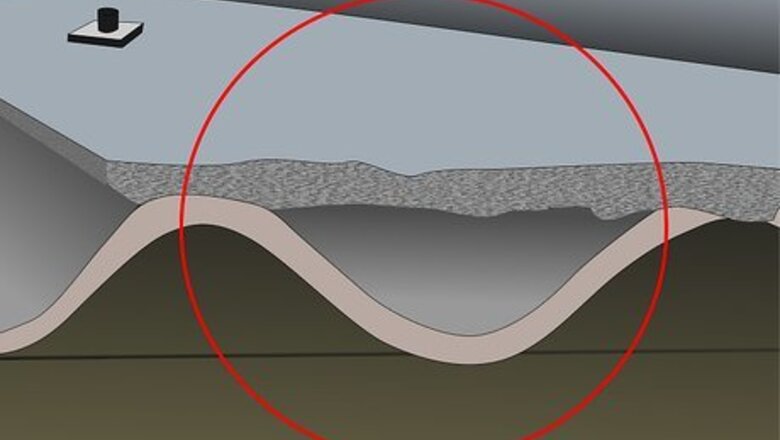
views
Checking for Signs of Asbestos
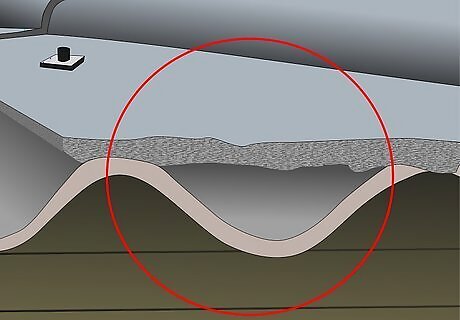
Determine when the building in question was constructed. Asbestos was widely used between 1920 and 1989, after which the Environmental Protection Agency (EPA) began regulating materials containing asbestos. Asbestos can most commonly be found in buildings, but also in gas heaters, hair dryers, some clothing and automotive brakes. Walls, flooring, pipes, textured paints, insulation, fireproofing materials, pipes, electric wiring, and even chalkboards constructed between 1920 and 1989 may contain asbestos. If the building was constructed between 1920 and 1989, chances are something in the building was constructed with materials containing asbestos. Few materials made today are constructed with asbestos. Items that do contain asbestos are now labeled as such.
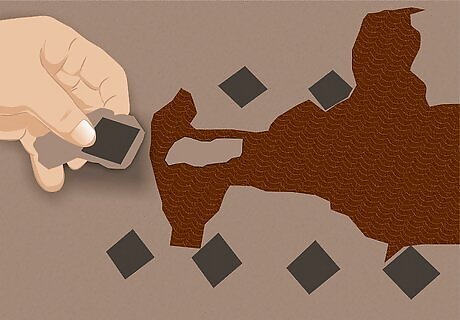
See if there are signs of disturbed asbestos materials. You can't tell whether an item contains asbestos just by looking at it. Instead, look for warning signs that construction materials are degrading. Asbestos isn't dangerous when it's still in good condition, but when it starts to break down and the fibers are released in the air, it becomes toxic. Look for signs of older materials that have become worn out or damaged. Disintegrating pipes, insulation, walls, tiles, vinyl flooring, stovetop pads, and other older materials that have been present in the building since its construction are signs to look out for. Look for cracks, dusty areas and spots where the material seems to be in the process of breaking down and falling apart.

Decide whether to get the area tested. If you don't see signs of construction materials degrading, you might not need to get the area tested, since asbestos is only dangerous when it becomes airborne. However, if you do see signs of degrading materials, or if you simply want to err on the side of safety, you should opt to get the area tested by a professional who has been certified to test for and handle asbestos safely. Another scenario in which you might want to get the area tested is if you plan to do new construction work or replace old materials. Even if the materials are still in good shape, they'll get disturbed during the construction process and may release fibers into the air. While you could purchase the equipment required to conduct asbestos testing, it is not recommended that you try this on your own. Asbestos testing should be conducted by someone who has gone through training and knows how to handle the material without causing a health hazard for the occupants of the building. If you haven't been trained, you could end up disturbing the asbestos and breathing it in or putting other people at risk of doing so.
Having the Area Tested

Hire a contractor to do the testing. Contact an EPA-approved contractor who is trained and licensed in handling asbestos to analyze the suspected particles, as well as filing the necessary paperwork required by the EPA. If you were to collect the samples yourself, you'd still have to give the samples to an EPA-certified laboratory for analysis, and give them the protective gear you wore during the collection for proper disposal. The EPA has provided a list of certified contractors by state at https://www.epa.gov/asbestos/state-asbestos-contacts. Federal law does not require asbestos testing done in single-family, detached homes to be conducted by an accredited professional, although some individual states require it. If you're interested in completing an asbestos professional training program, contact your state or local health department or regional EPA office for more information.
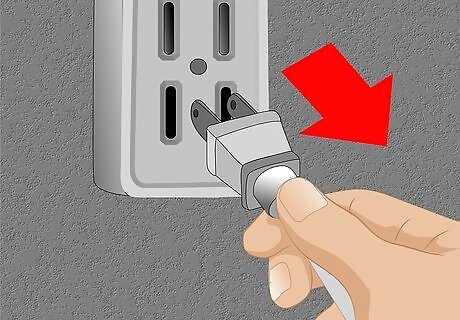
Prepare for the area to be tested. Since the act of testing for asbestos can disturb the material and potentially create a hazard, you should take a few precautions to ensure everyone's safety before the certified contractor conducts the test. Prepare the building as follows: Stop any air conditioning, fans, or ventilation systems that could circulate asbestos in the air. Plan to close off the area; don't let anyone in or out of the room being sampled during the collection. If the testing is being done in a home, it might be prudent to have everyone leave the house at the time of the testing.
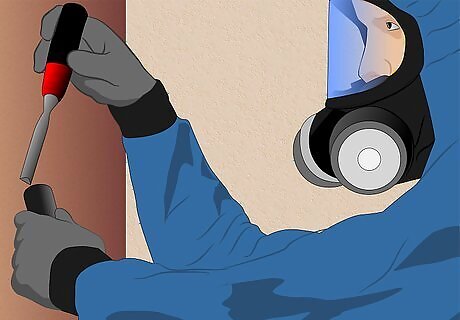
Understand the testing procedure. When you hire an EPA-certified contractor to come to your house to test for asbestos, a certain protocol will be followed to maximize safety. Anyone in the room at the time of testing should put on protective clothing and gear, including protective gloves, boots, and clothes which can be disposed of after collecting samples, and a face mask including a HEPA (High Efficiency Particulate Air) filter. The contractor will probably use the following testing method: Plastic sheeting will be laid sheeting below the area where samples will be taken and secured with tape. The area to be tested will be sprayed with water to keep loose fibers from getting in the air. A tool is used to cut into the substance to be tested to get a sample of fibers. A small sample of the material which might be or contain asbestos is placed in a sealable container to be sent to a lab for testing. The area where the sample was taken is patched with plastic sheet, drywall, or tape to prevent suspected fibers from spreading. Protective gear clothing contaminated by the material is placed in a sealed container to be disposed of properly.
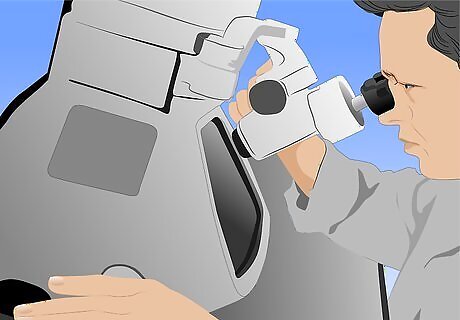
Wait for test results. The material sample should be sent to an asbestos analysis lab accredited by the National Voluntary Laboratory Accreditation Program (NVLAP) at the National Institute of Standards and technology (NIST). A list of laboratories is available at http://www.nist.gov/. If the sample tests positive for asbestos, you'll need to decide whether to repair the area or remove the materials that contain asbestos from the property.
Dealing With Asbestos
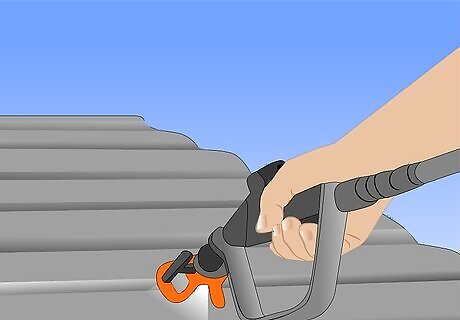
Have the disturbed material repaired. Repairs to materials that contain asbestos usually involved either sealing or covering the area to prevent fibers from being released into the air. With such a dangerous carcinogen present, it might seem strange to repair it instead of removing it, but repair is actually the safest option. Removing the materials tends to disturb them more, posing a greater health risk, while repairing the materials to contain the asbestos allows you to live with the materials safely. Repairs should be conducted by a certified professional to ensure they are done properly. In most cases, a special sealant or covering is applied to the area to keep it from breaking down. Floors containing asbestos might be covered with new flooring to keep fibers from entering the air. Repairs are less expensive than removal, and usually the best all-around option. However, if the materials are already quite damaged, and they'll eventually need to be removed, it's better to spring for removal right away. Applying a sealant or covering can make it more difficult to remove the materials later.
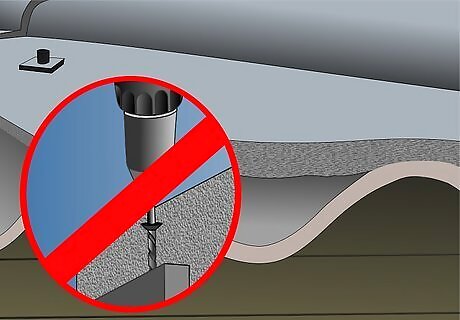
Live safely with materials that contain asbestos. After repairs have been conducted, it's still important to be careful around the materials that contain asbestos. Be cautious around the materials in question so you don't end up disturbing them and releasing the asbestos fibers. Take the following measures to live safely with asbestos: Keep activities to a minimum in the areas that have asbestos. For example, if the walls in your basement contain asbestos, don't spend more time than necessary there. Don't saw, sand, scrape, drill, or otherwise damage materials that contain asbestos, even after sealant has been applied. Don't use abrasive cleaning materials on materials that have asbestos. Don't vacuum or sweep debris on the floor that might contain asbestos. If further damage occurs, have it repaired by a professional.
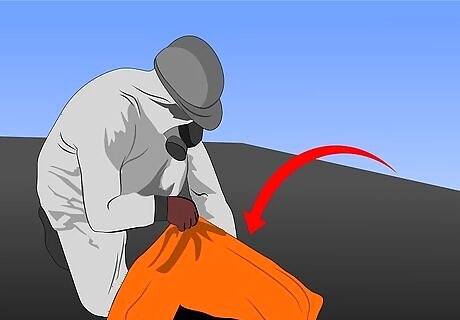
Consider asbestos removal. If you'd simply prefer not to have asbestos-containing materials in the building, you can opt for removal instead of repair. Hire a contractor who has been trained by the EPA. The removal process is more dangerous than the repair process, and if done improperly it can pose a serious health risk to individuals using the building.




















Comments
0 comment